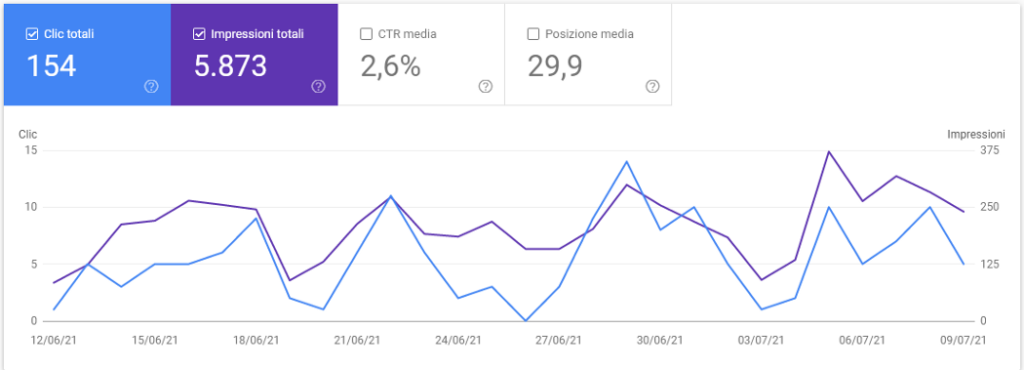A few months ago, a friend asked me to redo her website from scratch.
She owns a small consulting company and I have already written articles for her, but the person in charge of the technical material was not always available to submit new content.
After letting him know I’m not an expert and blogging as a hobby, she gave me the job and all the time I needed to solve her problem.
In early April, her website was back online. I insisted on publishing an article every two weeks because, as you know, both Google and readers like to have fresh content to read regularly.
Unfortunately, we have no idea how the site worked before my redesign, but I’ll tell you how it is now:
- 150 clicks in the last 28 days, according to Google Search Console
- 303 users and 351 sessions in the last 28 days, according to Google Analytics
- 75% of traffic comes from organic search (Google or Bing)
- 21% of the traffic is direct, while 4% is by referral.

What did we do and what did we not do to achieve these results?
Post Regularly
Once I understood that my friend was serious about adding a blog section to the static site, I told her to choose a posting schedule so that search engines and readers would know that her blog was actively producing content.
We decided to read an article every two weeks to have enough time to brainstorm, write and review the posts before going public.
Write both trending and evergreen content
Usually, she is the one who chooses the topic based on what she thinks her target customer might be looking for.
When he runs out of ideas, I check Google Trends.
She provides specific advice to companies and I try to pretend to be one of her potential clients. What kind of information would you look for if you own this business?
After collecting enough data to write an interesting and informative article, I present the idea to her.
Know your audience
The more specific your blog is, the more your audience will relate to the content and think that you are the right person for the job because you know the subject.
When you run a small business, you need to know very well what kinds of people need your help or product.
Having a blog that covers many topics without expressing your knowledge of a few specifics can make your reader doubt your abilities.
SEO and internal backlinking
Once the topic of the article has been decided, I check Google Trends to see the related queries and other keywords associated with it.
I also check which similar pages have meta descriptions and make sure all relevant keywords are present in the text without oversaturating it.
Every time I upload new content related to an old article, I add a link in the text and vice versa.
Backlinking tells search engines that you have multiple articles on the same topic and that your site can be considered a relevant source of information on the topic.
No social sharing or paid ads
She made it clear that she has no time to promote her site on social media. I was worried that no one would see her blog, but the numbers prove me wrong.
Obviously, the biggest companies would laugh at these numbers, but for her, it is enough. The time and money not spent promoting social media can be used to improve other aspects of her job.
Conclusion
The above number may not sound significant to you, but she has a small business and even getting a few new clients a month is enough for her.
I think her site is doing very well considering that she’s not doing any promotions on social media and the number of visits continues to grow.
By just posting a few articles a month that takes no more than a few hours a week to run, your small business is growing and new customers are contacting you through the contact module on the website.
